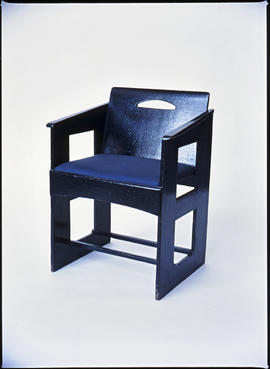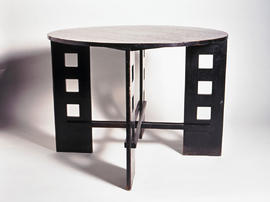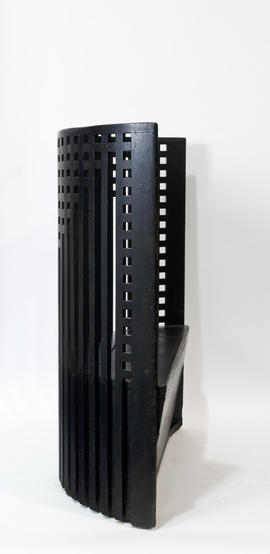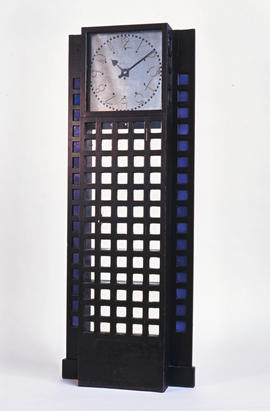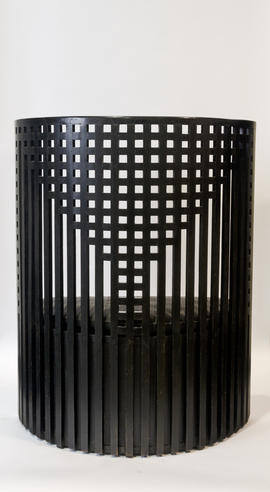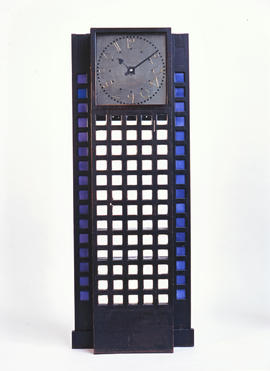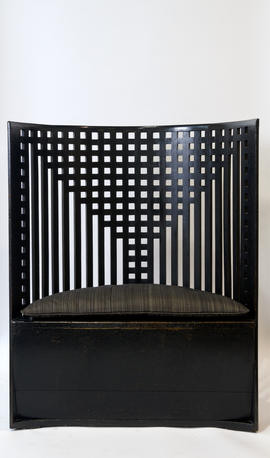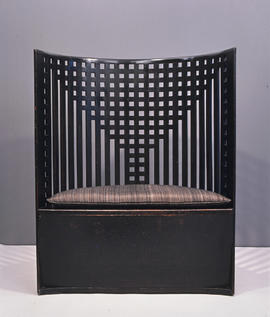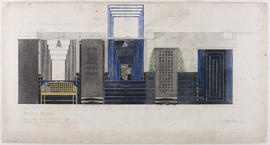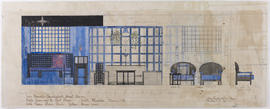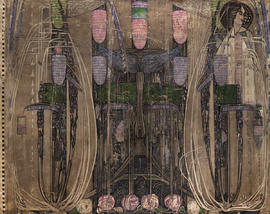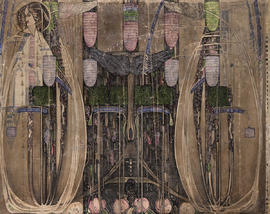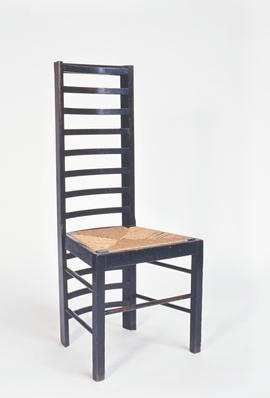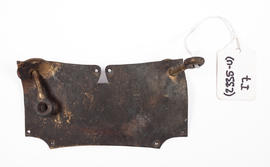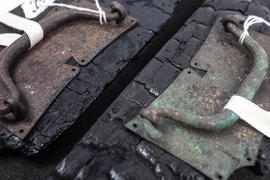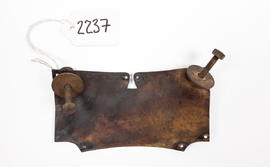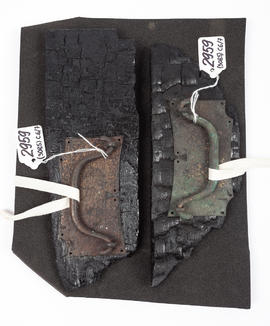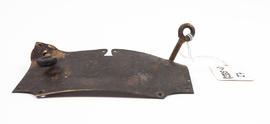- MC/F/45
- Item
- 1903
Designed for the Willow Tea Rooms, Glasgow. 'A very sturdy but not particularly comfortable chair, used in the ground floor saloons, the Gallery and the Smoking room... Their boxy shape contrasts with the taller and more open ladder-backs arranged alongside them in the layout of furniture which Mackintosh devised.' (Roger Billcliffe). Reupholstered in blue horsehair 1984 (the original upholstery on these and the Willow settle was a green and gold striped horsehair). This item was assessed for conversation in 2010 as part of the Mackintosh Conservation and Access project (2006-2010), and then again in 2018 following the fire in the Mackintosh Building in June 2018.
Mackintosh, Charles Rennie

